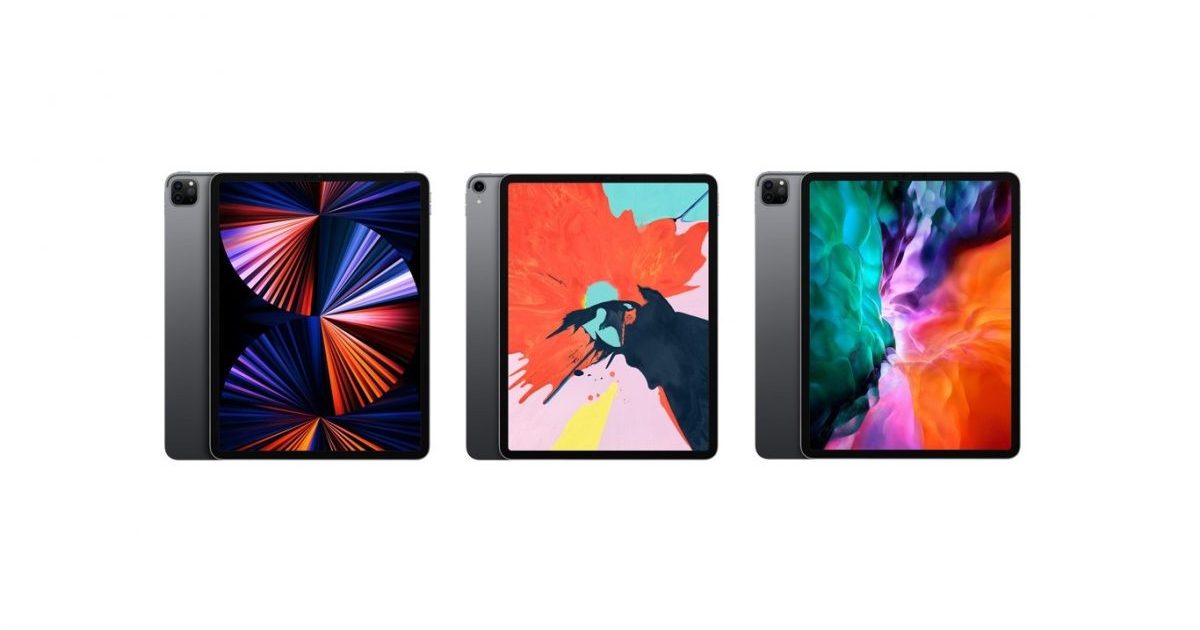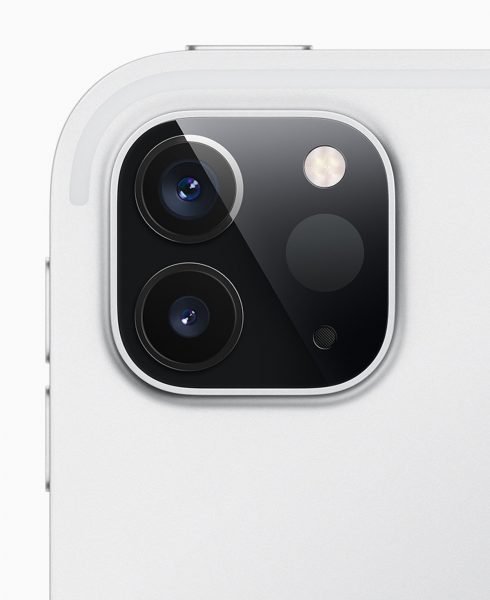Apple’s new M1 iPad Pro models are finally here. The next-generation iPad Pro models come with ultra-fast 5G connectivity, Liquid Retina XDR display, enhanced performance, and more. Though the new tablet features a ton of updates, is it worth making the upgrade from the 2020 or 2018 models to the latest iPad Pro? In this post, we will break down the differences between all models.

2021 iPad Pro vs 2020 iPad Pro vs 2018 iPad Pro
In this post, we have compared the pricing, display, battery, and other specs of the 2021 iPad Pro vs 2020 iPad Pro vs 2018 iPad Pro, so you can decide which device is the right fit for you and your workload.
Design
The 2020 iPad Pro models received no major design updates and look almost exactly like the 2018 iPad Pro models, available in 11 and 12.9-inch sizes with an all-screen design and an edge-to-edge display that does not include a Home button. The main design change can be observed on the rear end of the device with the 2020 and 2021 models featuring a square-shaped camera bump housing the wide-angle lens, ultra wide-angle lens, the new LiDAR Scanner, and a True Tone flash. Apple offers the iPad Pro in either a Silver or Space Gray aluminum.

Displays
The 2018 and 2020 iPad Pro models feature Liquid Retina displays and identical resolutions. The 2,388-by-1,668 pixel display of the 11-inch and the 2,732-by-2,048 resolution of the 12.9-inch has stayed the same.
The smaller variant of the 2021 iPad Pro uses the same technology as its predecessors with a 2388×1668 pixel resolution. However, the 12.9-inch model features a new Liquid Retina XDR mini-LED display with over 10,000 LEDs, a 2732×2048 pixels resolution
Cameras
The 2018 iPad Pro features a single 12-megapixel camera on the rear, the lens is actually the same as the 2020 model. The 2020 iPad Pro boasts a dual-camera system, featuring a 12-megapixel wide-angle camera with an f/1.8 aperture and a 10-megapixel ultra wide-angle camera with an f/2.4 aperture and a 125-degree field of view. The model also features support for 4K video recording, up from 1080p on the 2018 model. Both models feature a front camera of 7MP.

the iPad Pro features an all-new 12MP Ultra Wide front camera designed specifically for iPad that supports Center Stage which pans to keep the subject in the shot. On the rear end of the device, there are two camera sensors (12-megapixel wide-angle with f/1.8 aperture + 10-megapixel ultra-wide with f/2.4 aperture and 125-degree field of view) along with a LiDAR scanner. The rear setup is also capable of 2x optical zoom. The iPad Pro also features Smart HDR 3 thanks to the ISP and Neural Engine in the M1 processor.
Performance
The 2018 iPad Pro is equipped with an A12X chip while the 2020 models feature an A12Z Bionic chip. The only difference between the two chips is that the A12Z Bionic’s GPU contains one more active core than the A12X, with eight cores in total.
The iPad Pro features an eight-core design that is said to offer 75 times faster CPU performance compared to previous-generation models, as per Apple. Graphics performance is over 1,500 times faster than previous-gen iPad Pro models.

USB-C to Thunderbolt
Apple’s iPad Pro lineup shocked consumers in the past as these tablets do not use Lightning cables for charging. The switch to USB-C offers many benefits like compatibility with many other USB-C devices and faster charging.
With the 2021 lineup, Apple announced the shift to Thunderbolt 4. Thunderbolt and USB 4 offers 4x more bandwidth for wired connections than the previous iPad Pro models — up to 40Gbps. Thunderbolt supports 10Gbps Ethernet and supports a ton of external devices.
Capacity
The 2018 iPad Pro offers 64GB of storage, 256GB, 512GB, and 1TB of storage. With the 2020 models, Apple changed the smallest capacity from 64GB to128GB and the 256GB, 512GB, and 1TB options the same. For the 2021 models, Apple offers the same options as the 2020 iPad Pro but has started offering 2TB of storage as well.
Pricing
At launch, the 2018 and 2020 cost roughly the same with $799 for the 11-inch model at the lowest capacity and $999 for the 12.9-inch model. In 2021, the price for the 11-inch model at the lowest capacity remains the same as the years before. However, the price for the 12.9-inch model has gone up to $1,099. Cellular connectivity will cost you an additional $200.
Conclusion
The differences between the 2018 model and the 2020 model are not that major aside from an upgraded processor and additional camera lens. However, the 2021 iPad Pro not only offers a significant improvement in performance due to the M1 chip, but users also get Thunderbolt, 5G connectivity, and for the 12.9-inch model, improved display technology.
If you have the 2018 iPad Pro, the upgrade makes sense. However, users with the 2020 iPad Pro might not feel the need to upgrade. Especially if they do not require Thunderbolt connectivity for connecting their tablet to an external device. Pre-orders of the M1 iPad Pro start from April 30 on apple.com.
Read Also:
5 comments